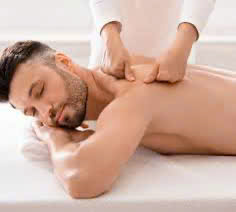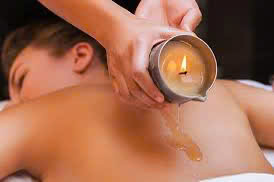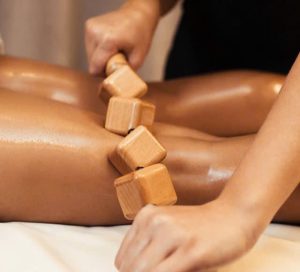Why Massage Is an Essential Supportive Therapy During Wellness Treatment
Massage is more than just a relaxing indulgence; it is a profound supportive therapy with numerous benefits that contribute significantly to overall wellness. As a gentle yet powerful method of healing, massage plays an integral role in enhancing physical, mental, and emotional health. When incorporated into wellness programs, massage acts as an effective complementary approach that supports the body’s natural healing processes, reduces stress, alleviates pain, and promotes a state of balance and harmony.
In this comprehensive exploration, we delve into why massage is an essential supportive therapy during wellness treatment. From its historical roots to modern techniques, we examine the scientific basis of its benefits, practical applications, and the compelling reasons to prioritize massage as part of a holistic health plan.

The Role of Massage in Holistic Wellness
Holistic wellness aims to achieve balance within the body, mind, and spirit. It recognizes that health is not merely the absence of illness but the harmonious functioning of all physical and mental aspects. Massage therapy fits seamlessly into this philosophy because it addresses multiple levels of wellness simultaneously.
A carefully administered massage can target physical discomfort, mental stress, and emotional tension—each of which can undermine overall health if left unaddressed. Incorporating massage into wellness strategies allows individuals to reconnect with their body, reduce the effects of modern lifestyle stressors, and foster resilience and vitality.
Before exploring specific benefits and techniques, it’s important to understand how massage serves as a bridge connecting the physical and psychological components of health.
The Mind-Body Connection in Wellness
Modern research increasingly supports the idea that health is deeply intertwined with mental states. Anxiety, depression, and stress often manifest physically, leading to muscle tightness, headaches, or digestive issues. Conversely, physical ailments can exacerbate mental distress, creating a feedback loop that hampers recovery.
Massage therapy acts on this connection, offering a way to soothe both mind and body. It stimulates the parasympathetic nervous system—the relaxation response—which counters the stress-induced sympathetic nervous system activation. As a result, massage can lead to decreased cortisol levels, reduced heart rate, and a sense of calmness.
Creative insight: Imagine massage as an internal reset button—when pressed, it seeks to realign the body’s stress response, restoring harmony and fostering a sense of well-being.

Supporting the Immune System Naturally
A well-functioning immune system is crucial for health maintenance and disease prevention. Chronic stress, poor sleep, and sedentary habits compromise immunity, making the body more vulnerable to infections and illness.
Massage stimulates lymphatic circulation, which helps the body eliminate toxins and immune-related waste products. Enhanced blood flow delivers oxygen and nutrients to tissues, promoting cellular repair and better immune defenses. Furthermore, massage reduces stress hormones like cortisol, which, when elevated over prolonged periods, impair immune function.
Personal analysis: Think of massage as a gentle immune boost—by encouraging the natural detoxification pathways and reducing stress, it empowers the body’s defenses without resorting to pharmaceuticals.
Scientific Foundations of Massage Benefits
Understanding the scientific principles underlying the massage benefits provides credibility and encourages integration into wellness practices. Multiple studies have established a range of physiological and psychological effects resulting from various massage techniques.
The following discussion highlights key mechanisms through which massage influences health.

Neurophysiological Effects
Massage stimulates cutaneous and subcutaneous nerve endings, which send signals to the brain that modulate pain perception and influence mood-regulating neurotransmitters. For example, increased levels of serotonin and dopamine post-massage contribute to feelings of relaxation and happiness.
Massage also reduces the activity of nociceptors—pain receptors—dampening chronic or acute pain sensations. This neurophysiological response contributes significantly to the relief of musculoskeletal discomfort during wellness treatment.
Circulatory and Lymphatic Improvements
Healthy circulation ensures tissues receive necessary oxygen and nutrients while removing metabolic waste products. Massage improves blood flow through mechanical pressure and rhythmic movements. Enhanced lymphatic drainage facilitates detoxification, reduces swelling, and supports tissue repair.
These effects are particularly beneficial for individuals with circulatory issues, post-injury recovery, or those experiencing edema.
Psychological and Emotional Impact
Research indicates that massage can decrease levels of stress hormones such as cortisol and increase beneficial neurotransmitters like serotonin and endorphins. These biochemical changes result in improved mood, reduced anxiety, and a lowered perception of pain.
Furthermore, massage provides a tactile experience that fosters emotional comfort, especially for individuals undergoing psychological stress or trauma.
Practical Applications of Massage as a Supportive Therapy
Integrating massage into wellness treatments requires understanding various techniques and tailoring sessions to individual needs. The diversity of massage modalities allows practitioners to select methods that best support patient goals, whether they involve pain relief, relaxation, or functional improvement.
A comprehensive wellness plan may combine different massage styles, lifestyle advice, exercise, and nutritional strategies for optimal results.
Common Massage Techniques in Wellness Treatment
Different massage therapies target specific health issues or promote particular benefits. Recognizing these styles enhances the treatment’s effectiveness.
The most prevalent types include Swedish massage, deep tissue massage, lymphatic drainage, sports massage, and aromatherapy massage. Each technique varies in pressure, depth, and purpose.
For example, Swedish massage employs long strokes and gentle kneading to promote relaxation, perfect for stress reduction. Deep tissue massage involves firm pressure to resolve chronic muscle tension, aiding injury recovery. Lymphatic drainage massages gently stimulate lymph flow, supporting detoxification and immune health.
Creative insight: Think of these techniques as different tools in a wellness toolbox—each carefully selected to address specific physical and mental health needs.
Incorporating Massage into Wellness Protocols
Successful integration of massage into wellness programs requires personalized assessments and clear goal setting. Practitioners may recommend regular massage sessions as part of ongoing health maintenance or as immediate support during recovery phases.
Additionally, educating clients about self-massage techniques and post-massage self-care practices can prolong benefits. Combining massage with mindfulness, breathing exercises, and healthy lifestyle habits creates a holistic support system.
Customized plans might involve weekly sessions, bi-weekly relief massages, or specialized therapy after physical activity or stress episodes.

Challenges and Considerations
While massage offers many benefits, contraindications do exist. Certain health conditions, such as infectious skin diseases, severe blood clotting disorders, or acute injuries requiring immobilization, may preclude massage therapy.
Moreover, finding skilled, licensed practitioners ensures safety and maximizes benefits. Regular communication between clients and therapists helps align expectations and adjust treatment plans to evolving health circumstances.
The Transformative Impact of Massage on Wellness
From physical benefits to psychological resilience, massage therapy acts as a catalyst in a holistic wellness journey. Its ability to reduce stress, enhance circulation, support immune function, and foster emotional stability underscores its crucial role as a supportive therapy.
A well-designed massage program not only alleviates symptoms but also empowers individuals to take active roles in their health. The nurturing touch of massage helps reconnect mind and body, fostering a profound sense of well-being and balance.
In a world where chronic stress and modern lifestyle challenges are pervasive, massage presents a natural, sustainable, and effective support system for maintaining health and vitality.
Conclusion
Massage is an invaluable supportive therapy that complements and enhances wellness treatment. Its multifaceted benefits span physical relaxation, pain relief, immune support, and mental clarity. Scientific evidence underscores the neurophysiological, circulatory, and psychological impacts of massage, making it a powerful tool for holistic health. By integrating diverse massage techniques into personalized wellness plans, individuals can experience profound improvements in their overall well-being, resilience, and quality of life. As a natural, non-invasive modality, massage continues to prove its vital role in nurturing health, harmony, and vitality for those committed to a balanced and vibrant life.
The Role of Massage in Pain Management
Pain can significantly impact the quality of life, affecting emotional well-being and physical functioning. Massage therapy has emerged as a viable alternative for pain management, offering relief through various physiological and psychological mechanisms that alleviate discomfort and improve overall wellness.
Understanding how massage contributes to pain relief empowers individuals to make informed choices regarding their health and treatment options.
Mechanisms of Pain Relief through Massage
The human body’s response to pain is complex, involving the central nervous system, psychological factors, and physical manifestations. Massage therapy offers a multi-faceted approach that addresses several aspects of pain management.
First and foremost, massage promotes the release of endorphins, the body’s natural painkillers. By manipulating soft tissues, massage stimulates the production of these chemicals, effectively dampening perceptions of pain and discomfort. This biochemistry not only increases pain tolerance but also creates a sense of euphoria and relaxation.
In addition, massage directly affects muscle tension and soreness. Tension in muscles can contribute to persistent pain, particularly in the neck, shoulders, and lower back. By loosening tight muscles and promoting blood flow, massage facilitates healing and reduces the likelihood of muscle fatigue and spasms. Moreover, this increased blood circulation enhances nutrient delivery and waste removal, further supporting recovery and pain relief.
Personal Insight: Pain can often feel isolating; however, the soothing power of massage can transform that experience. Engaging with a skilled practitioner can lead to discussions about pain origins and management strategies that consider both physical and emotional dimensions.
Targeted Conditions for Massage as Pain Relief
Several conditions benefit significantly from massage therapy. Migraines, arthritis, fibromyalgia, and sports injuries are just a few examples of how therapeutic touch can facilitate pain management.
Migraines, for instance, can result from muscle tension and stress. Utilizing techniques such as trigger point therapy or craniosacral therapy can offer profound relief by addressing the tension in the neck, shoulders, and scalp. Similarly, those suffering from arthritis can experience reduced joint stiffness and improved mobility through gentle massage.
In the realm of sports injuries, massage aids in recovery by minimizing inflammation, loosening scar tissue, and improving flexibility in previously injured areas. This application shows that massage is not just for the relaxation-seeking individual; it plays a pivotal role in enhancing athletic performance and recovery.
Creative Insight: Consider massage as a personalized approach to pain management—tailored to address specific needs and physical conditions. It’s like customizing a recipe, where each ingredient serves a unique purpose in enhancing the final dish, or in this case, improving well-being.
The Psychological Dimension of Massage and Pain Relief
The relationship between massage and pain is not solely physiological. Psychological factors such as stress, anxiety, and depression can exacerbate pain symptoms. Therefore, addressing the emotional and psychological aspects is critical in a holistic approach to pain management.
Massage helps cultivate a soothing environment that allows individuals to disconnect from daily stressors and reconnect with their bodies. This mindful presence during treatment enables relaxation, which can mitigate the perception of pain. The tactile sensations as a therapist applies pressure calm the nervous system, reducing anxiety and leading to a more constructive perception of pain.
Furthermore, the therapeutic relationship established between the practitioner and client fosters trust and understanding. This aspect significantly enhances treatment outcomes. Patients often report a greater willingness to engage in their healing journey, leading to long-term positive effects on their mental and emotional states.
The Influence of Cultural Perspectives on Massage Therapy
Cultural context plays a substantial role in shaping an individual’s perception and acceptance of massage therapy. Throughout history and across various cultures, massage has been employed as not merely a luxury but as an essential component of healthcare practices.
Understanding these cultural dimensions can offer insights into the broader acceptance and the modalities of massage therapy worldwide.
Traditional Techniques Worldwide
Many cultures boast distinct massage techniques rooted in their history and traditions. For instance, Thai massage combines acupressure, stretching, and yoga-like movements, promoting both physical release and spiritual awakening. Conversely, techniques such as Shiatsu in Japan focus on pressure points related to meridians, adhering to the principles of traditional Chinese medicine.
These diverse methodologies emphasize therapeutic effects and the cultural significance of touch and connection. The integration of local herbs, oils, or rituals into massage further enhances its therapeutic application and showcases cultural specificity.
Personal Analysis: Exploring these traditions highlights how massage—despite its differing forms—serves a universal purpose: healing the body and mind. This perspective encourages practitioners to draw upon a broad array of techniques, tailoring treatments to the individual’s background and needs.
The Impact of Societal Norms on Massage Perception
Cultural narratives surrounding touch and bodily autonomy shape people’s attitudes toward seeking massage therapy. In some cultures, traditional openness about bodily care fosters acceptance and encourages individuals to seek therapies that prioritize physicality. In contrast, others may view massage as taboo or associating it solely with luxury or self-indulgence.
These societal norms can influence patient engagement in therapeutic sessions and overall access to massage therapy. Therapists may need to navigate these perceptions and encourage open conversations about the benefits and potential in addressing physical discomfort.
Creative Insight: Imagine as a bridge between cultures—a means of enhancing understanding through shared experiences. The embrace of diverse techniques demonstrates flexibility and respect toward individual heritage and wellness practices, ultimately inspiring holistic wellness.
Integration of Cultural Practices into Western Massage Therapy
The increasing globalization of wellness has led to the incorporation of various cultural techniques into mainstream practices. Western therapy has evolved, blending traditional practices with modern scientific understanding.
For example, aromatherapy—a practice rooted in various cultures—has gained traction within treatments. Essential oils, with their therapeutic properties, complement the physical benefits of and provide an added sensory experience, deepening relaxation and connection.
Ultimately, practitioners can creatively weave various cultural practices into their offerings, aligning with the preferences and comforts of individual clients while honoring the rich traditions that have shaped these techniques.
Conclusion
The multifaceted role of in enhancing overall wellness cannot be overstated. From providing vital pain relief to enriching the emotional landscape of individuals, its impact spans both physical and psychological domains. The diverse techniques rooted in various cultural practices enrich the health experience, celebrating the art of touch in a world yearning for connection and authenticity.https://www.google.com/knowledgegraphshares?sca_esv=41514daaec8f90aa&hl=vi&gl=vn&output=search&kgmid=/g/11ld8cgf50&q=Citymax+spa-+thai+massage-massage+home+service+bur+Dubai&shndl=30&shem=lspt11&source=sh/x/loc/act/m1/5&kgs
Emphasizing the integration of therapy into personalized wellness plans presents a holistic approach to health, beckoning individuals to explore the nurturing power of touch. As we embrace this ancient practice within the context of modern healthcare, we foster a culture of healing, resilience, and empowerment that honors the intricate relationship between body, mind, and spirit.https://jobedubaispa.com/hot-stone-massage/
